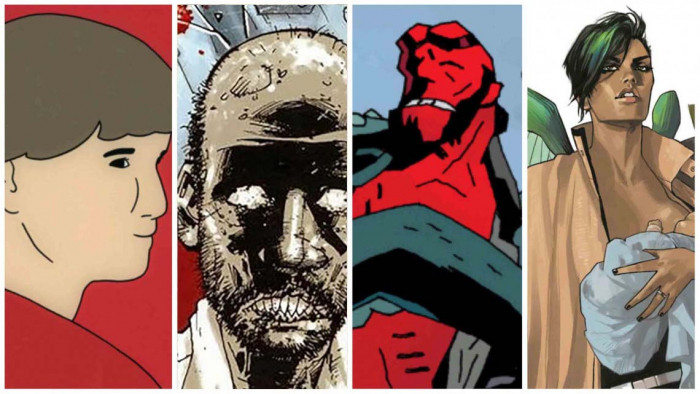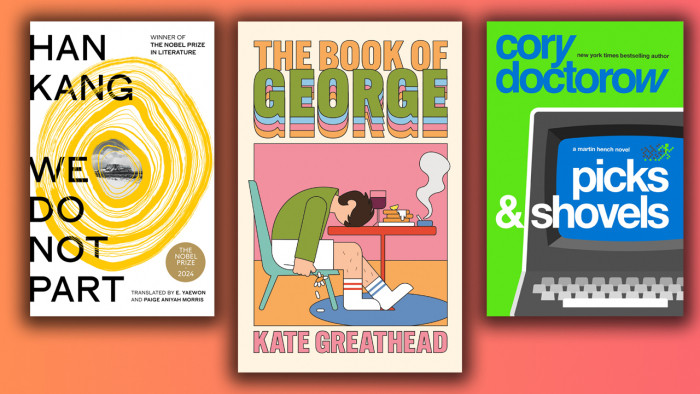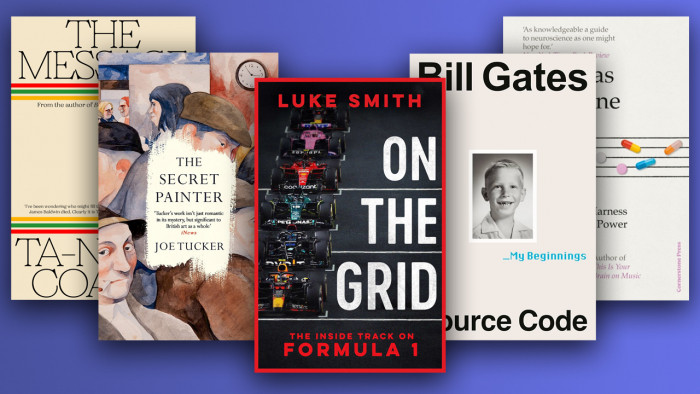A Confederacy of Dunces is 35 years old, this year. That means it's 46 years since author John Kennedy Toole, the man who wrote that Pulitzer Prize-winning masterpiece, took his own life.
Authors live in a bizarre and often heart-breaking world of posthumous success and here we doff our collective cap to this novelists who never knew they made it big.
(Images: Rex)

Franz Kafka
Only a few of Kafka's works were published during his lifetime, but it was those published posthumously, mostly by his friend Max Brod, who completely ignored Kafka's wish to have the manuscripts destroyed, that propelled him to a fame he never knew about. Albert Camus, Gabriel García Márquez and Jean-Paul Sartre are among the writers influenced by his work and the term Kafka-esque has entered the English language, which is pretty much the ultimate compliment a writer can receive.

Jane Austen
Though Austen did have some success in life, the fact that she published anonymously meant she never really got to bask in it. What acclaim her works did receive in the 19th Century paled in comparison to her meteoric rise to literary legend status in the 1900s. The first important milestone was a 1911 essay by Oxford Shakespearean scholar A. C. Bradley, which is "generally regarded as the starting-point for the serious academic approach to Jane Austen". The first film adaptation was the 1940 MGM production of Pride and Prejudice starring Laurence Olivier was followed by a glut of TV and big screen adaptations which have played no small part in ensuring her work is, rightly, always in print. We could probably ease off on the screen versions though, eh?

Henry David Thoreau
'If in doubt, self-publish', is (on the whole) the sort of terrible advice aspiring authors should ignore. Alas, this news comes 153 years too late for HDT who succeeded in having two books published, neither of which were very popular, before self-publishing A Week on the Concord and Merrimack Rivers, but only sold 300 of the 1,000 copies he had printed. It was only after Thoreau’s death in 1862, aged 44, that he started to receive the acclaim he deserved and today he is recognised as one of the greatest writers America has ever produced.

Zora Neale Hurston
In a fairly torrid life ZNH was largely unpopular in both white and black literary circles, with her Harlem Renaissance contemporaries like Ralph Ellison even taking their pound of flesh in negative reviews. The Color Purple author Alice Walker revived interest in Hurston's work in 1975, however, and today she's considered one of the pre-eminent writers of twentieth-century African-American literature.

Sylvia Plath
Plath was clinically depressed throughout most of her adult life and, in 1963, just a month after she published a semi-autobiographical novel, The Bell Jar, she wrote a note to her downstairs neighbour instructing him to call the doctor, then committed suicide using her gas oven. She won a posthumous Pulitzer Prize for The Collected Poems and is considered one of the US's greatest writers.

Edgar Allan Poe
Poe did achieve some success prior to his death, but was far from showered with riches. He was paid a poxy $9 for his most famous poem, The Raven, a very modest sum even in the 1840s. Consider that side-by-side with the fact that an original copy of Poe’s Tamerlane and Other Poems sold at Christie’s in New York for $662,500, a record price for a work of American literature. To say he could have done with a slice of that cash before shuffling off this mortal coil would be an understatement.

John Kennedy Toole
Although several people in the literary world felt Toole's writing skills were praiseworthy, his novels were rejected consistently during his lifetime. After suffering from paranoia and depression due in part to the endless knock backs, he committed suicide at the age of 31. The posthumously published A Confederacy of Dunces, released 11 years later, won the Pulitzer Prize for Fiction. It is now considered a canonical work of modern literature of the Southern United States.

Emily Dickinson
Here's a stat that's sad-making. While Dickinson was a prolific private poet, fewer than a dozen of her 1,800 poems were published during her lifetime. Worse still, the work that was published whilst she was of this Earth, was usually altered significantly by publishers to fit the conventional poetic rules of the time. It was not until after her death in 1886—when Lavinia, Dickinson's younger sister, discovered her cache of poems—that the breadth of Emily's work became apparent and it wasn't until 1955 that a complete and mostly unaltered collection became available.

Geoffrey Chaucer
The bane of many a GCSE student's life, the Father of English literature and the greatest English poet of the Middle Ages didn't have the majority of his work released until after his death in the 1400s. His legacy? Basically the most important figure in creating the English language. What a dude.

Stieg Larsson
Perhaps the most famous of the 'non-famous in life, but famous in the afterlife' stories, Larsson died on 9 November 2004 in Stockholm at the age of 50 of a heart attack after climbing seven flights of stairs to his office because the lift was not working. Four years later he was the second best-selling author in the world, behind Khaled Hosseini. The third novel in his Millennium trilogy became the most sold book in the United States in 2010 and by December 2013 his series had sold 80 million copies worldwide.

Irène Némirovsky
The author of the unfinished Suite Française - two novellas portraying life in France during Nazi occupation Paris - died in Auschwitz. Her work is considered remarkable because it was written during the actual period itself and yet reads like a work that was years in the making. Némirovsky's older daughter, Denise, kept the notebook containing the manuscript for for fifty years without reading it, thinking it was a journal or diary of her mother's, which would be too painful to read. In the late 1990s, however, she made arrangements to donate her mother's papers to a French archive and decided to examine the notebook first. Upon discovering what it contained, she instead had it published in France, where it became a bestseller in 2004. It has since been translated into 38 languages and has sold over 2.5 million copies.

Anne Frank
Like Némirovsky, Anne Frank died in a concentration camp at the hands of the Nazis, and the contents of her diary, published two years after her death thanks to her father, is one of most heart-wrenchingly important reads of all time.

Marina Keegan
Marina was to begin a job at The New Yorker following her graduation from Yale in 2012, but died in a car crash on Cape Cod, only five days after the ceremony. A collection of her works, both fiction and non-fiction, was published posthumously to critical acclaim and quickly became a New York Times bestseller. Read it one day. It might just change your outlook on life.

Philip K. Dick
Dick spent most of his career as a writer in near-poverty with the field of Sci-Fi paying terribly. He died just as he started making money, a few months before the premiere of Blade Runner, the film based on his 1968 novel Do Androids Dream of Electric Sheep?. Since then, 11 popular films based on his works have been produced, including Total Recall, A Scanner Darkly, Minority ReportPaycheckNext, ScreamersThe Adjustment Bureau and Impostor. He's seen none of them. In 2005, Time magazine named Ubik one of the hundred greatest English-language novels published since 1923 and, in 2007, Dick became the first science fiction writer to be included in The Library of America series.

Herman Melville
The author of Moby-Dick made about $10,000 as a writer during his lifetime, most of which came from his early adventure novel Typee, which - though an overnight bestseller - did not generate enough royalties to support him financially. Moby-Dick, widely considered one of the greatest novels in the English language, earned just over $500. It wasn't until 1921, thirty years after Melville's death, that the "Melville Revival" of the late 1910s and 1920s brought about a radical reassessment of his work. The starting point was Raymond Weaver's 1921 biography Herman Melville: Mariner and Mystic and his 1924 publication of Melville's unfinished manuscript, Billy Budd, which he discovered among papers shown to him by Melville's granddaughter.










